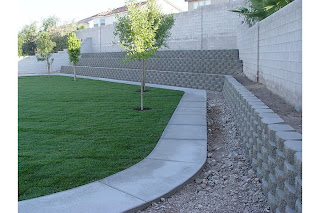There is an old saying that
says something about a camel wanting to “just put his nose in the tent” during
a sandstorm. Pretty soon, his head is in, then his front legs, then…well, you
get the picture. Before he knows it, the owner of the camel is outside in the
sandstorm while the camel is in the tent.
I’m not sure that gardening
in the backyard isn’t exactly like that.
First, you get a nice potted
plant and it looks good on the plant stand in the corner or in the windowsill. You just do it for some 'color.' Then, you think that you would like to have some potted geraniums out front by
the door just to dress it up a bit. Then the flowering plant in the corner of
the yard. Then the flower bed along the fence or driveway. Then you think you
might like to have a peach tree in that far back corner of the back yard. Just
one, because you don’t know if you can grow peaches in your area.
Later on, you visit your neighbor
and he has some nice, fresh, juicy tomatoes that taste so good you start to
think that you should do that, too. So you plant one. Just one. After all, you
don’t really have all that much time to garden. Mowing the lawn and trimming
the bushes and pruning the now productive peach trees (you had to add another
one for adequate fertilization) take up all your “yard time.” And you are
surprised at how well it does. 11 cups of cherry tomatoes from one plant in one
season. And they are sooooooo tasty, too, that you cannot remember how many of
them actually made it into the house.
| And in buckets, no less. |
Then you decide that if your
neighbor can grow those big, juicy beefsteak tomatoes, you can, too. So you
plant several, not knowing which ones will do the best in your area. When they
start to ripen, you can’t believe how easy it was compared with how expensive
they are in the store (and how much
better your own taste!) that you start to think about making salsa.
This year you buy the
peppers and the onions and the cilantro to go with your tomatoes, and it’s
good. But something just isn’t quite right and you realize that your
wonderfully tasting tomatoes are being mixed with rather bland, tasteless “store-bought”
food and you decide that you need to grow some of the other things. You don’t
need a lot, just a few onions, maybe a couple of pepper plants and of course,
you’ll only buy one packet of cilantro seeds. (How much cilantro can you grow with only one packet of seeds anyway?)
| You absolutely cannot make salsa without cilantro. To do so would not only be unthinkable, but possibly criminal. |
| Sweet red onions. |
In the fall you plant the
onions. In the winter you start the tomatoes indoors (you didn’t need all that stuff on those shelves of that rack in the
garage anyway. The neighborhood thrift store can get much more use out of those
things anyway.). And those light fixtures weren’t all that expensive, either.
| Love those apricots. |
In the spring you plant the
cilantro and transplant the tomatoes outside. Come the middle of July, you
begin to harvest the whole thing and you make your first batch of home-grown
salsa. As you sit under the shade of you apricot tree (the peaches did so well you decided that a couple of varieties of
apricot might be nice, too) and sip lemonade (who knew lemons could do so well this far North?) and dip your
toasted kale chips (much better for you than fried tortilla chips and kale grows so well that you don't miss those silly shrubs along the fence) into your
fresh salsa, you think to yourself “Now if I take out those shrubs and remove
that lawn over there and …” you suddenly realize that the camel is in the tent
leaving you outside.
| Chard, not kale, but you get the idea. |
But that’s really OK because
that’s where your garden is.






